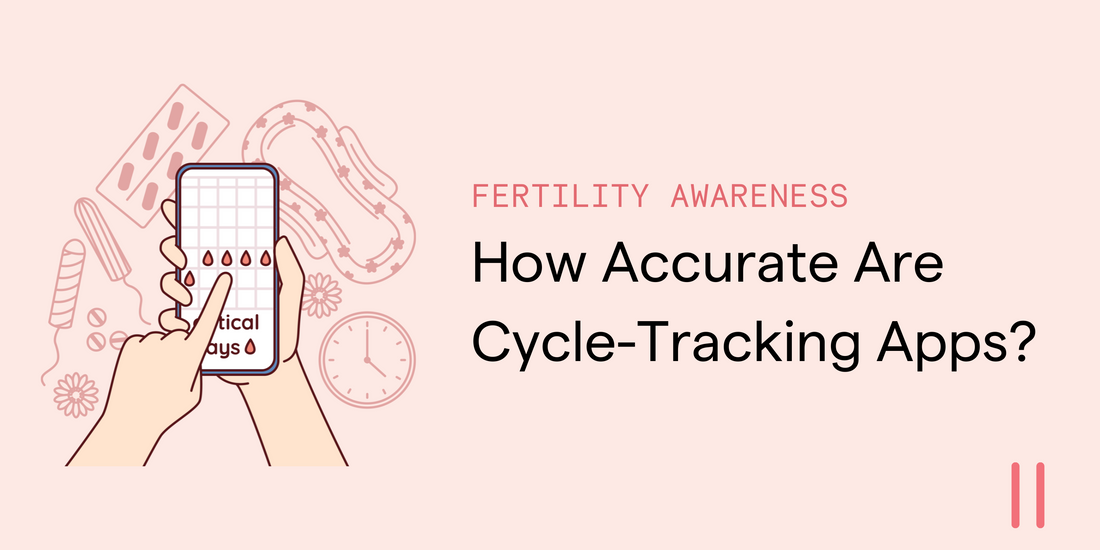Cycle tracking apps are increasingly popular among those wanting to understand their menstrual cycles, with promises of accurate ovulation predictions. While these apps can be a useful tool for cycle tracking, how accurate are they in predicting ovulation? Research shows that while these apps can be reliable in some cases, counting on them for fertility predictions may not give you the full picture. To truly understand your fertility window and ensure accuracy, it’s essential to use other fertility biomarkers in combination with app data.
How Cycle Tracking Apps Work
Most cycle tracking apps rely on algorithms that estimate ovulation based on the dates of your period and the average length of your menstrual cycle. By inputting data such as cycle length, period start and end dates, and sometimes symptoms like basal body temperature (BBT) or cervical mucus consistency, the app predicts when ovulation is likely to occur. This is typically around the middle of the cycle, but can vary depending on individual patterns.
While this method works well for many users, it’s important to remember that cycle tracking apps use general assumptions and averages. This approach may not take into account natural variations in your cycle, which can be influenced by a variety of factors such as stress, diet, illness, or lifestyle changes.
How Accurate Are Cycle Tracking Apps?
A 2020 study published in JAMA Internal Medicine evaluated five popular cycle tracking apps and found that they had an average accuracy of 21-22% for predicting the fertile window, defined as the 6-day window leading up to and including ovulation. The study found that while these apps were useful for understanding general cycle patterns, their predictions were not always precise enough for reliable fertility planning. In fact, for people trying to conceive, relying on the app alone could be risky. The same study also found that the average error in predicting ovulation was about 6 days earlier or later than the actual ovulation date.
Similarly, a 2019 study in Human Reproduction examined the accuracy of cycle apps for predicting ovulation and found that while apps provided useful estimates for some users, they were still less accurate compared to direct fertility monitoring methods like ovulation test strips and temperature charting. The researchers concluded that relying on apps alone for ovulation predictions might not be sufficient, especially for those with irregular cycles or specific fertility concerns.
The Role of Ovulation Test Strips and Fertility Biomarkers
To get a more accurate prediction of ovulation, you can use ovulation test strips, which detect the surge in luteinizing hormone (LH) that occurs 12 to 36 hours before ovulation. A study published in Fertility and Sterility showed that using ovulation tests in conjunction with cycle tracking apps could increase the accuracy of predicting ovulation, particularly when the app was used in combination with other fertility biomarkers. Ovulation tests are known to provide a direct indicator of the body’s readiness for ovulation, which is something an app can only estimate.
Basal body temperature (BBT) charting is another helpful method. After ovulation, a slight increase in temperature occurs due to rising progesterone levels. Tracking your BBT every morning before getting out of bed can confirm when ovulation has occurred. A study in The Journal of Obstetrics and Gynecology highlighted how tracking BBT can improve the understanding of ovulation timing and confirm app predictions.
Additionally, monitoring cervical mucus changes is another valuable fertility sign. As ovulation approaches, cervical mucus becomes clear, stretchy, and abundant—similar to egg whites. Research from Reproductive Health has shown that observing these changes can provide valuable insight into your most fertile days, further enhancing the accuracy of ovulation predictions.
Conclusion
While cycle tracking apps offer a convenient and accessible way to monitor your menstrual cycle, their accuracy in predicting ovulation can vary significantly. Research shows that these apps can be inaccurate, with an error margin of several days. To get a more precise prediction, it’s important to combine app data with ovulation test strips, BBT charting, and cervical mucus observation. By using multiple methods, you can achieve a much more accurate picture of your fertility, whether you’re trying to conceive or manage your reproductive health.

